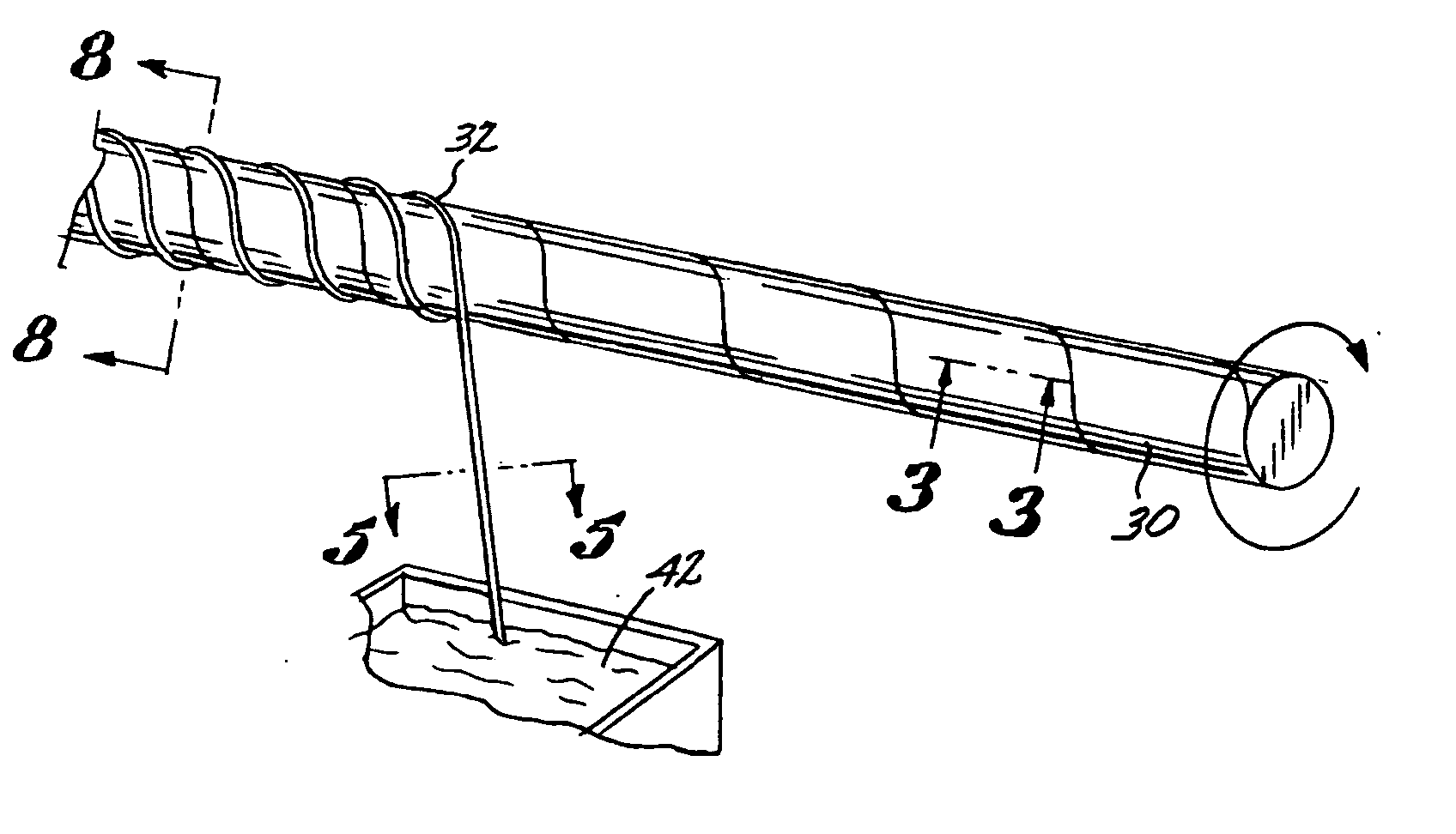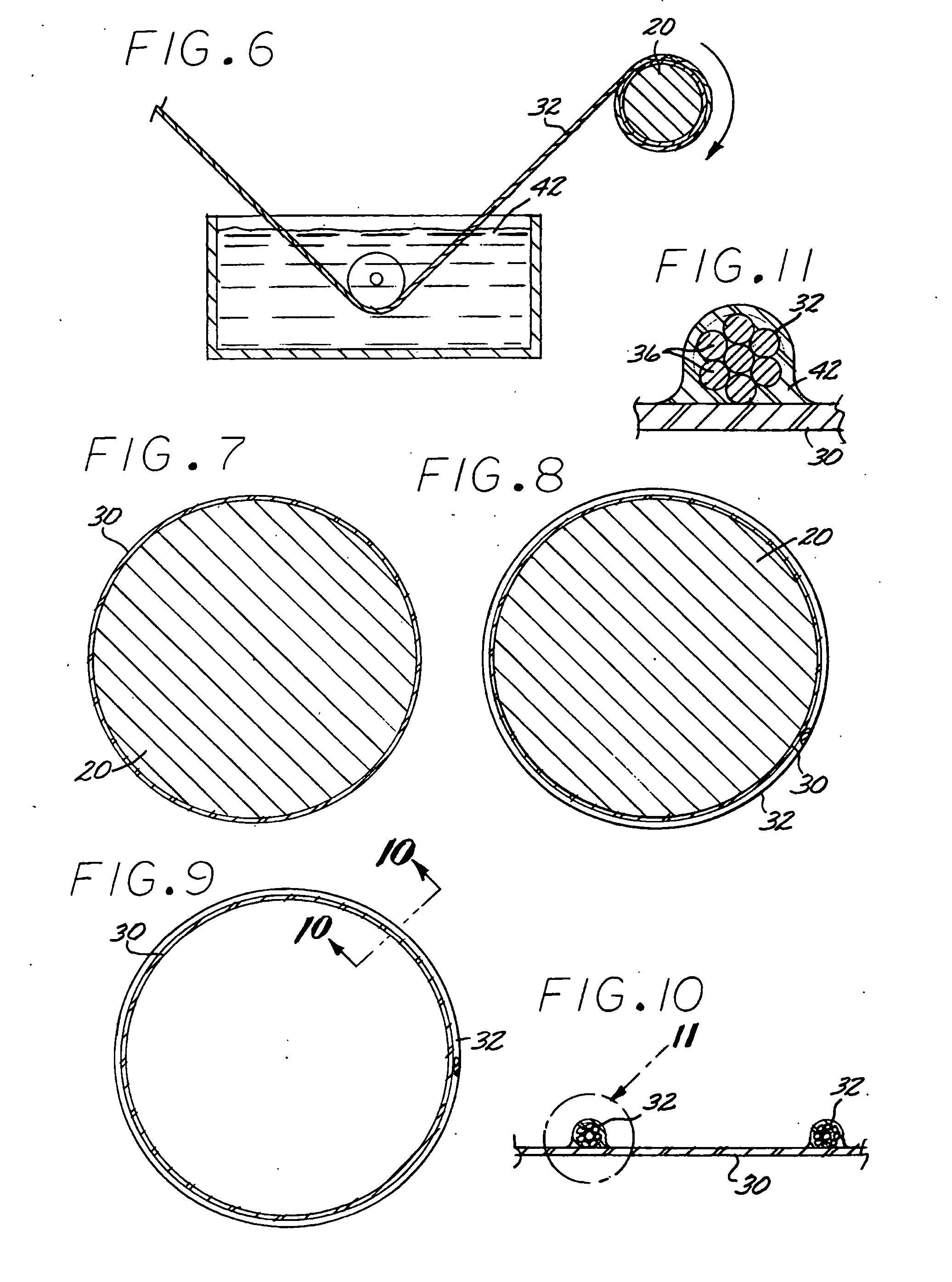Cable reinforcement for flexible ducts
a flexible duct and reinforcement technology, applied in the direction of flexible pipes, mechanical equipment, pipes, etc., can solve the problems of reducing the efficiency of reinforcing chords, and reducing the resistance of reinforcing chords to high temperature and flame, so as to reduce the drag on fluids, improve efficiency, and minimize power and energy.
- Summary
- Abstract
- Description
- Claims
- Application Information
AI Technical Summary
Benefits of technology
Problems solved by technology
Method used
Image
Examples
Embodiment Construction
[0029] The lightweight flexible flame resistant reinforced duct 22 of the present invention includes, a flexible membrane tube wall 30 constructed of a polymer film which may be on fiberglass fabric and encased in a multi-strand spiral cable 32 attached along the wall to provide distension and reinforcement. Referring to FIG. 5, the cable 32 is formed by grouping multiple strands together and may be coated in a polyimide varnish 34 before it is attached to the to the wall 30 by means of an adhesive 42, (FIGS. 10-11).
[0030] In one preferred embodiment, referring to FIGS. 1 and 15, the duct is formed by wrapping the edges of the membrane 30 over a mandrel 20 and sealing any seams with an adhesive. Once the tube wall is formed, the metallic cable 32 is wrapped about the membrane and mandrel and attached to the membrane by an adhesive 42.
[0031] Commercial transport aircraft typically make use of flexible ducting for transport of various fluids within the aircraft frame for controlling...
PUM
 Login to View More
Login to View More Abstract
Description
Claims
Application Information
 Login to View More
Login to View More - R&D
- Intellectual Property
- Life Sciences
- Materials
- Tech Scout
- Unparalleled Data Quality
- Higher Quality Content
- 60% Fewer Hallucinations
Browse by: Latest US Patents, China's latest patents, Technical Efficacy Thesaurus, Application Domain, Technology Topic, Popular Technical Reports.
© 2025 PatSnap. All rights reserved.Legal|Privacy policy|Modern Slavery Act Transparency Statement|Sitemap|About US| Contact US: help@patsnap.com



